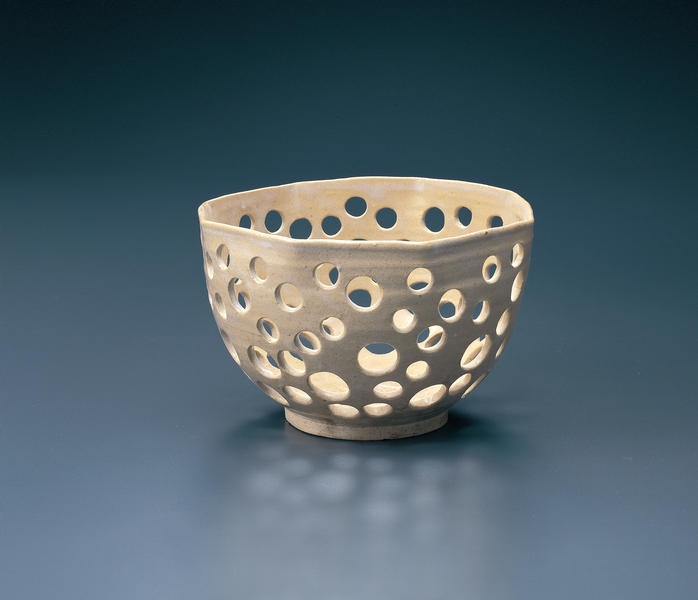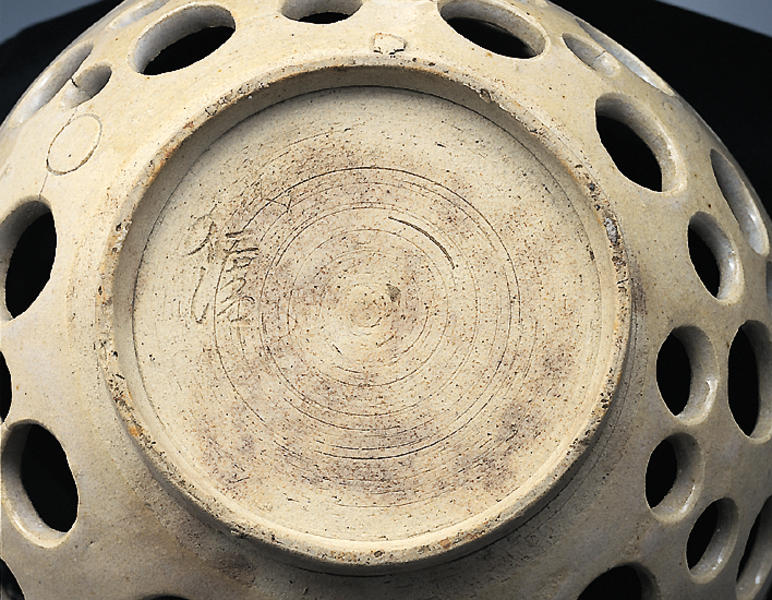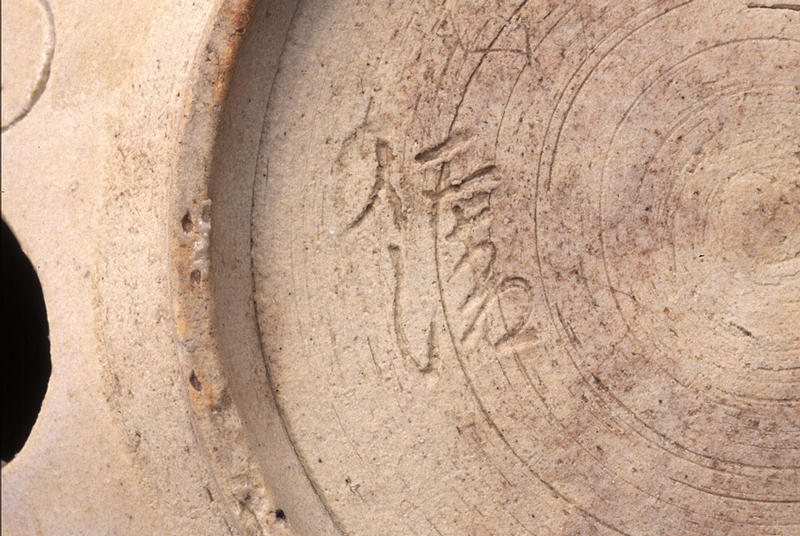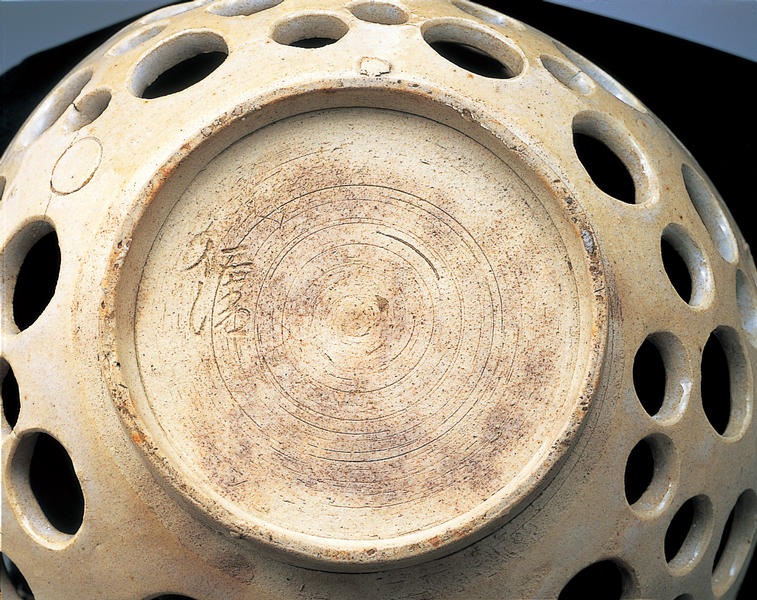Ninsei Bowl with Circular Cut-out Design
- Omuro kiln, Kyoto
- Edo period
- 17th century
- Ninsei ware, white glaze
- H-12.5 D-19
Catalogue Entry
Edo period, 17th century
Ninsei ware, white glaze
Height, 12.5cm; mouth diameter, 18.5cm;
foot diameter, 9.4cm
The upper half of the body of this bowl was hand-smoothed while turned on the wheel, and the lower half was tool-carved. The foot is a carved foot, with some additional hand smoothing which gives a somewhat rounded appearance to the edges. Pierced holes in 2 different sizes were created with circular tools, and there are also a few places where the tool was pressed into the clay, but the surface was not pierced. With the exception of the foot surround and the interior of the foot, the entire body has been coated in an off-white glaze, but as the glaze was not that thickly applied, the glaze overall has a semi-transparent appearance, and only the areas where the glaze accumulated show as this off-white color.
The design quality of the countless number of pierced circles is reminiscent of contemporary ceramics, and yet a similar pierced deep bowl with chrysanthemum blossom-shaped holes is in the Nezu Institute of Fine Arts collection. Further, a bowl of approximately the same size with an octagonal mouth edge and a Ninsei seal has been excavated from the area in front of Ninnaji's gate. It is common for Ninsei's works to be impressed with a seal, and the unframed Ninsei seal known as "the large seal" has been impressed on the left side of the interior of the foot of this bowl. YO
Catalogue Entry
Nonomura Ninsei was an early Edo period potter in Kyoto. His given name was Seibei. He is considered one of the greats of Kyoyaki ware. His kiln was located in Omuro, in the area in front of the gates of Ninnaji, and hence produced what is called Omuro ware. The somewhat beautiful and yet austere quality of his works was strongly influenced by the aesthetics of Kanemori Sowa, a tea master known as Hime Sowa. Ninsei's technique at the wheel was superb, and he made a great number of items for the tea ceremony, including his overglaze enamel tea jars .
After this jar was formed on the potter's wheel, its rim was pressed into an octagonal shape and countless round holes were carved out of its sides. This unique design gives the work a sense of light coolness. There are also several spots where the cut of the circular cutting tool can be seen, but the clay is not pierced through, revealing how Ninsei worked deftly with the un‐dried clay, cutting where necessary, balancing uncut circles with those cut through. Generally Ninsei's works are impressed with one of the artist's seals, and here his so‐called large seal without borders, stating “Ninsei," can be seen impressed on the left edge of the inside of the bowl's foot.



